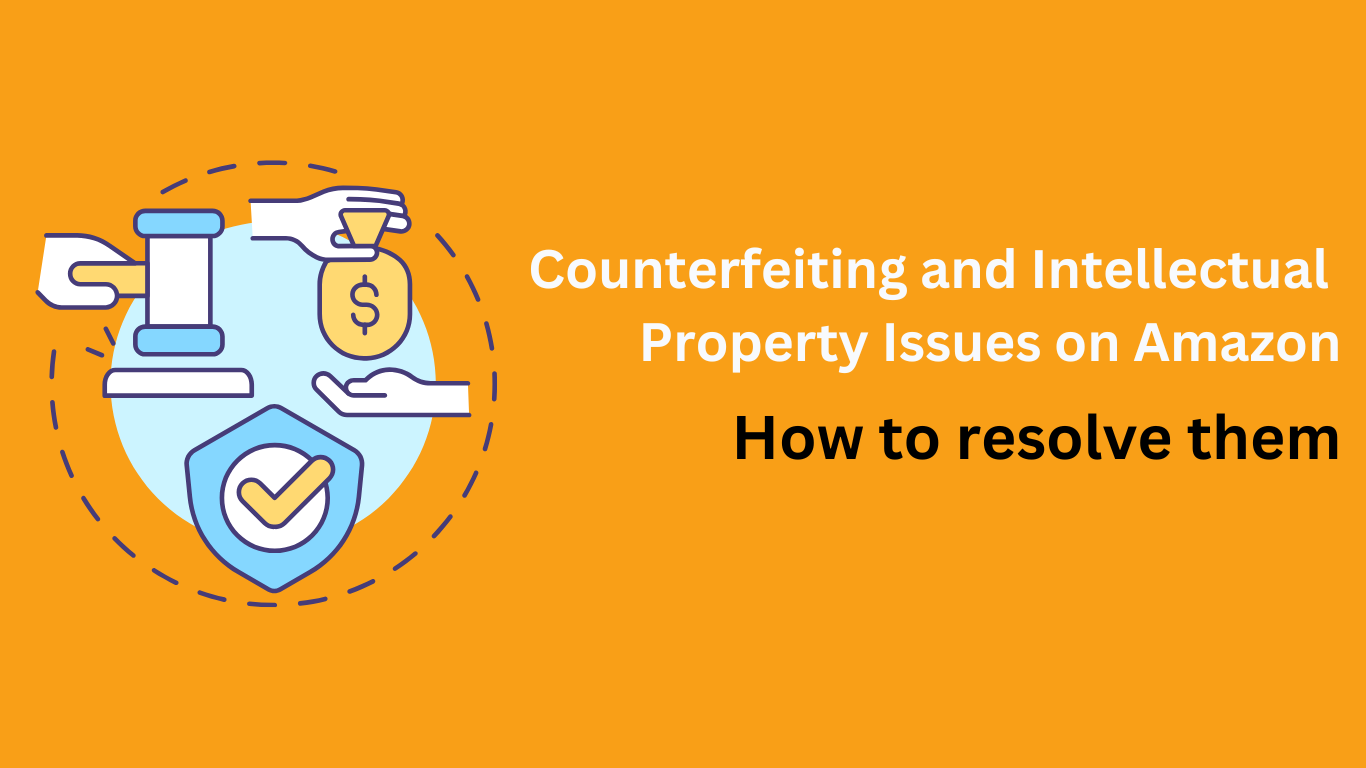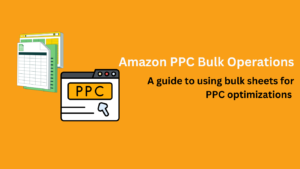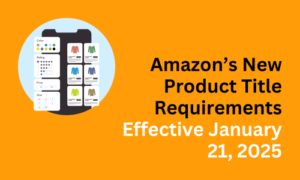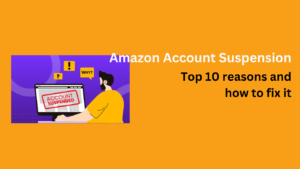Amazon is a thriving global marketplace connecting millions of buyers and sellers. However, its scale has also made it a hotspot for counterfeiting and intellectual property (IP) violations. Protecting brands and their intellectual property is a critical focus for Amazon, but challenges persist. Let’s delve into how counterfeiting impacts Amazon sellers and what measures are in place to address this issue.
The Scope of Counterfeiting on Amazon
Counterfeiting refers to the production and sale of imitation goods that infringe on trademarks, copyrights, or patents. On Amazon, counterfeiters often attempt to exploit the platform’s vast customer base by listing fake products under legitimate brand names. Counterfeit listings not only violate intellectual property rights but also contribute to an unsafe shopping environment for consumers.
Counterfeiting not only erodes consumer trust but also leads to significant revenue loss for brands. For example:
Loss of Brand Reputation: Customers receiving subpar counterfeit products often attribute their dissatisfaction to the legitimate brand.
Revenue Diversion: Counterfeiters undercut authentic sellers by offering lower prices, diverting sales from genuine brands.
Legal Complications: Brands may face liability issues if customers are harmed by counterfeit products.
The sheer volume of counterfeit goods on Amazon has made intellectual property protection a priority for both sellers and the platform.
Amazon’s Efforts to Combat Counterfeiting
Amazon has implemented multiple systems and programs to fight counterfeiting and protect intellectual property rights:
Amazon Brand Registry
The Brand Registry program helps rights owners manage their trademarks and monitor listings. It provides access to tools like “Report a Violation” for removing counterfeit listings.
Registered brands have better control over their product listings and can ensure that only authorized sellers list their products. Amazon Brand Registry has become a cornerstone in protecting IP rights on the platform.
Transparency Program
Transparency is a product serialization service designed to authenticate genuine products. Brands assign unique codes to each product unit, which Amazon scans before shipping.
This program prevents counterfeiters from selling fake goods under legitimate brand listings and ensures that customers receive authentic products.
Project Zero
Project Zero gives brands direct access to tools that automate counterfeit removal. Using machine learning, it identifies and eliminates counterfeit listings.
Rights owners can also manually remove counterfeit items without waiting for Amazon to investigate claims. This initiative empowers brands to take immediate action against counterfeit listings.
Amazon’s Counterfeit Crimes Unit (CCU)
Amazon’s dedicated Counterfeit Crimes Unit collaborates with law enforcement and rights owners to investigate and prosecute counterfeiters.
The CCU has helped shut down several counterfeit networks globally, safeguarding brands and consumers while reinforcing Amazon’s commitment to IP protection.
IP Accelerator
This program helps small and medium-sized businesses quickly secure trademarks by connecting them with vetted law firms. Brands with pending trademarks can enroll in Brand Registry earlier, gaining access to IP protection tools.
Common IP Issues Faced by Sellers
Despite Amazon’s initiatives, sellers still encounter intellectual property disputes, often arising from misunderstanding or misuse of the platform’s policies. Counterfeiting on Amazon is just one facet of the broader issue of IP violations. Other challenges include:
Fake IP Claims
Unscrupulous competitors sometimes file false IP complaints to eliminate legitimate sellers from the marketplace. These claims can lead to listing suspensions or account deactivations.
Sellers must provide extensive documentation, including invoices and licensing agreements, to refute such claims.
Trademark Infringement
Unauthorized use of a brand’s logo, name, or other trademarks in product listings can lead to takedown notices and penalties.
Sellers must avoid using protected IP without explicit permission. Amazon’s Brand Registry offers tools to monitor and prevent such infringements.
Patent Infringement
Selling products that infringe on utility or design patents can lead to lawsuits and significant financial loss.
Conducting thorough research and seeking legal advice before listing products is essential.
Copyright Violations
Using copyrighted images, text, or videos without permission can result in immediate removal of listings.
Sellers should create original content or obtain proper licenses for any third-party assets.
Best Practices for Sellers to Protect Their Brand
As an Amazon seller, safeguarding your brand from counterfeiting and IP issues requires a proactive approach. Here are some best practices:
Enroll in Brand Registry
Secure your trademarks and take advantage of Amazon’s tools to monitor and remove counterfeit listings. This step is essential for building a robust IP protection strategy.
Use Transparency Codes
Apply unique product codes to ensure your items are distinguishable from counterfeits. Transparency codes are a powerful deterrent against counterfeiters.
Monitor Listings Regularly
Keep an eye on your product listings for unauthorized changes or suspicious sellers.
Use tools like Helium 10 or Jungle Scout to track unauthorized activity. Monitoring your brand’s presence on Amazon helps identify and address issues promptly.
Work with Experts
Agencies like Active Seller Hub can help you navigate Amazon’s complex IP landscape. Our team, including ex-Amazonians, specializes in resolving account health and IP issues swiftly. With expertise in counterfeiting prevention and intellectual property protection, we offer tailored solutions.
Keep Documentation Handy
Maintain updated invoices, licenses, and intellectual property registrations. This documentation is crucial for refuting fake claims and proving authenticity.
Proactive Measures to Prevent Counterfeiting
In addition to the standard practices outlined above, sellers can adopt more advanced measures to prevent counterfeiting and protect their intellectual property:
Enhanced Product Packaging
Use tamper-proof and custom-designed packaging that is difficult to replicate. Adding QR codes or holographic seals can help customers verify authenticity.
Customer Education
Educate your customers about identifying counterfeit products by sharing tips through your product descriptions, emails, or social media channels. This builds trust and helps customers make informed purchases.
Collaboration with Law Enforcement
Partner with local authorities and organizations specializing in counterfeit prevention to share data and insights. Collaboration often leads to more effective actions against counterfeit networks.
Frequent Brand Audits
Conduct regular audits of your online presence to identify unauthorized sellers or counterfeit listings. Utilize third-party services for comprehensive monitoring across various platforms.
Register Intellectual Property Globally
If you sell internationally, ensure your trademarks, patents, and copyrights are registered in every market where you operate. This enables you to take legal action against counterfeiters in multiple jurisdictions.
How Amazon Sellers Can Address IP Violations
If you’re facing IP issues on Amazon, it’s essential to act promptly:
File a Counter Notice
For false claims, submit a counter-notice through Amazon’s Seller Central. Provide proof of authenticity and any relevant legal documentation. Amazon’s structured process ensures transparency for all parties involved.
Engage Legal Support
Seek professional advice to handle complex IP disputes, especially patent infringement cases. Legal experts can provide the necessary guidance for navigating intellectual property challenges.
Leverage Amazon’s Support Channels
Use Brand Registry support or escalate issues through Amazon’s seller forums and dedicated account managers. These channels are designed to assist sellers in resolving disputes effectively.
Focus on Proactive Measures
Regular audits, enhanced product packaging, and maintaining strong relationships with customers can deter counterfeiters. Transparency in your operations builds trust with Amazon and customers alike.
The Role of Agencies in IP Protection
Navigating Amazon’s IP landscape can be overwhelming, particularly for small businesses. Partnering with a specialized agency like Active Seller Hub can simplify this process. With a team of experts, including ex-Amazon professionals, we offer tailored solutions to:
Monitor and remove counterfeit listings.
Resolve fake IP claims efficiently.
Implement advanced brand protection strategies.
Address intellectual property violations swiftly and effectively.
Conclusion
Counterfeiting and intellectual property issues pose significant challenges to Amazon sellers, but understanding the platform’s policies and tools can mitigate these risks. By leveraging Amazon’s Brand Registry, Project Zero, and other initiatives, sellers can protect their brands while maintaining consumer trust. Additionally, partnering with experts ensures swift resolution of IP disputes, allowing sellers to focus on growing their businesses.
Counterfeiting on Amazon requires vigilance and proactive measures to safeguard your brand. By incorporating strategies like using Transparency codes and partnering with agencies like Active Seller Hub, sellers can thrive in the ever-evolving e-commerce landscape while maintaining the integrity of their intellectual property.











